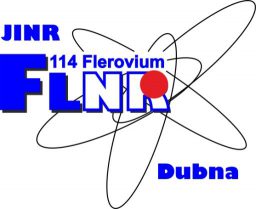New method for formation of through nanochannels in tungsten oxide
International team of scientists from the Institute of Modern Physics of the Chinese Academy of Sciences (IMP CAS) and the Joint Institute for Nuclear Research studied the nanostructuring processes in tungsten oxide (WO3). Using a combined experimental and numerical approach the physicists presented a new method for formation of through nanochannels in tungsten oxide on irradiation with fast heavy ions. This method can be used for creating new materials with unique optical and electronic properties for photocatalysis and semiconductor electronics.
Formation of nanochannel smaller than 10 nm in WO3 films on irradiation with fast heavy ions.
Nanostructuring is a process of creating materials in which the sizes of the structural elements are determined in the nanoscale range (up to hundreds of nanometers). Modern technologies for creating nanostructures provide the possibility of controlled formation of nanoscaled components with a given shape, size and spatial arrangement. Due to this nanostructured materials can have the unique properties such as the improved mechanical strength, electrical and thermal conductivity, optical properties, etc.
Today irradiation with fast heavy ions is one of the perspective methods for creating nanostructural materials. This technology is actively used to obtain track membranes or “nuclear filters” with high selectivity, control critical parameters of high-temperature superconductive ceramics, create conducting channels in layered structures and form quantum dots.
Scientists irradiated WO3 films with argon, crypton, xenon and tantalum ions of energies from several hundred megaelectronvolt up to several gigaelectronvolt using high-energy heavy ion accelerators at the Heavy Ion Research Center (HIRFL) in Lanzhou (China). During the experiments it was discovered that irradiation of tungsten oxide leads to the formation of through cylindrical nanopores with a thin amorphous shell.
Sector of Ion-implantation nanotechnologies and radiation materials science of FLNR JINR study radiation effects of fast ions in solids.
Using molecular dynamics modeling conducted by a scientist of the Joint Institute the kinetics and mechanisms of nanopore formation in tungsten oxide were described during the study.
Irradiation with high-energy heavy ions usually creates uniformly distributed nanopores approximately of the same size which is an important factor for the development of filter materials and devices. Also, for example, by irradiating layered structures with heavy ions it become possible to create in them special nanosized areas – quantum dots.

